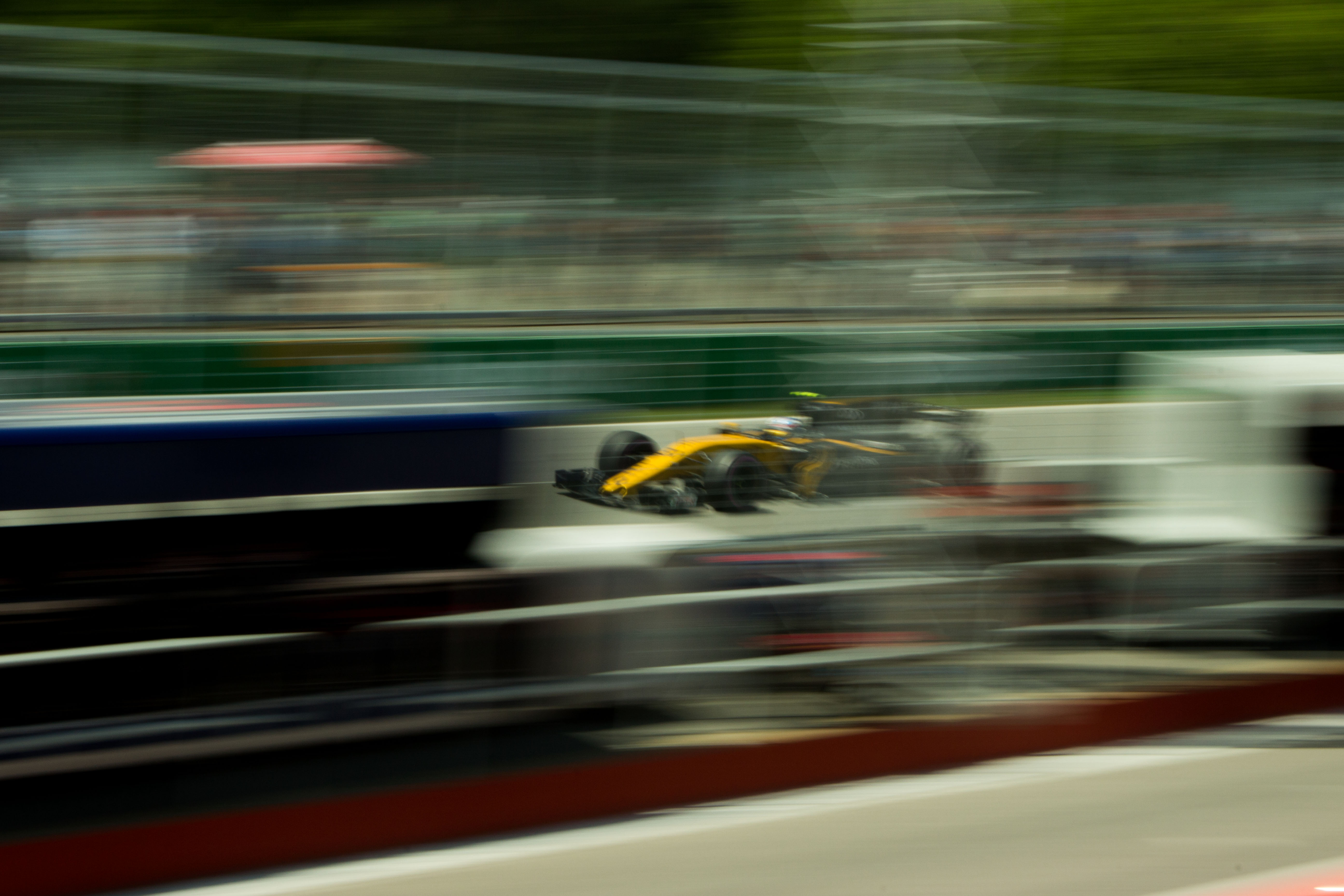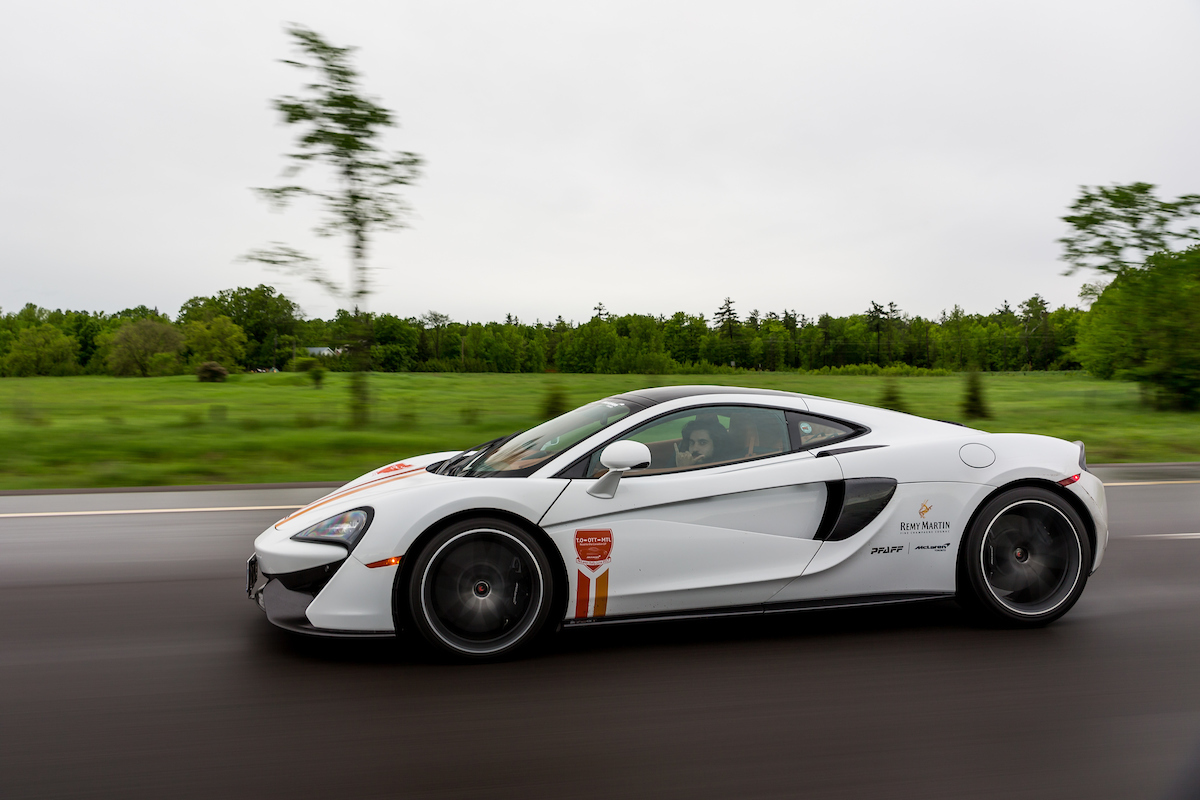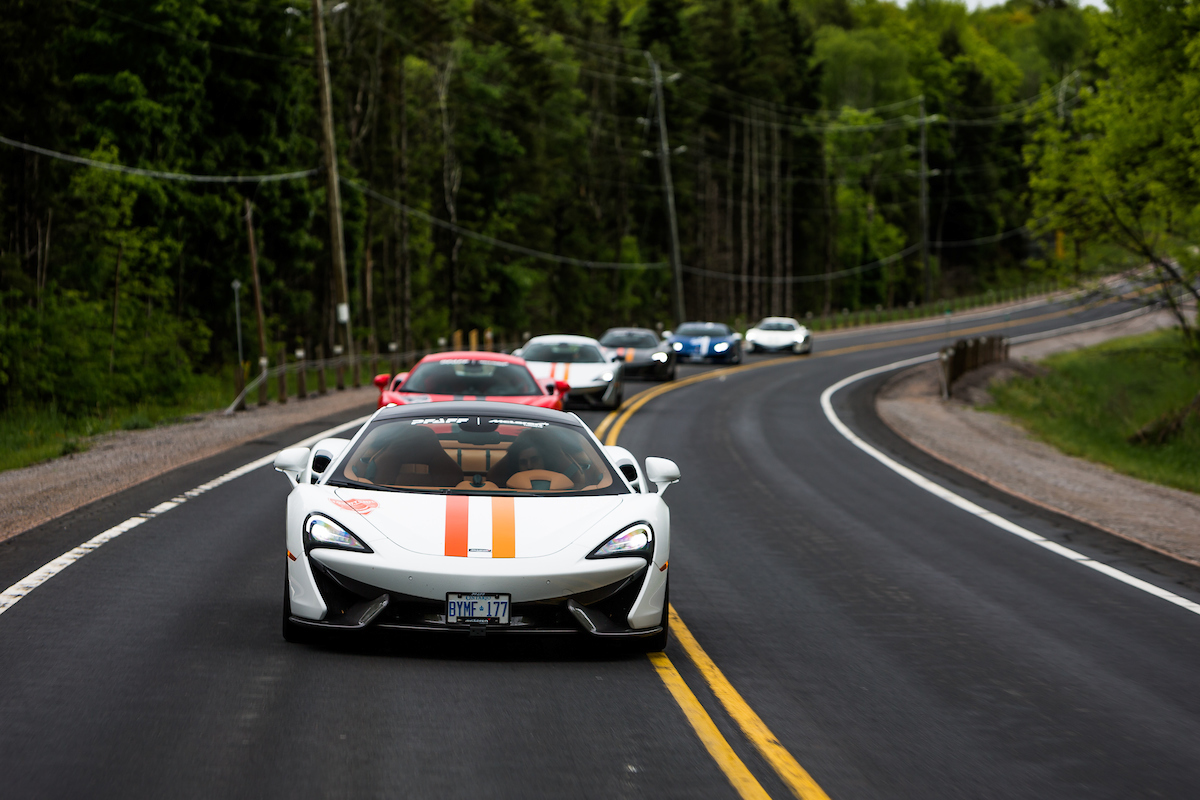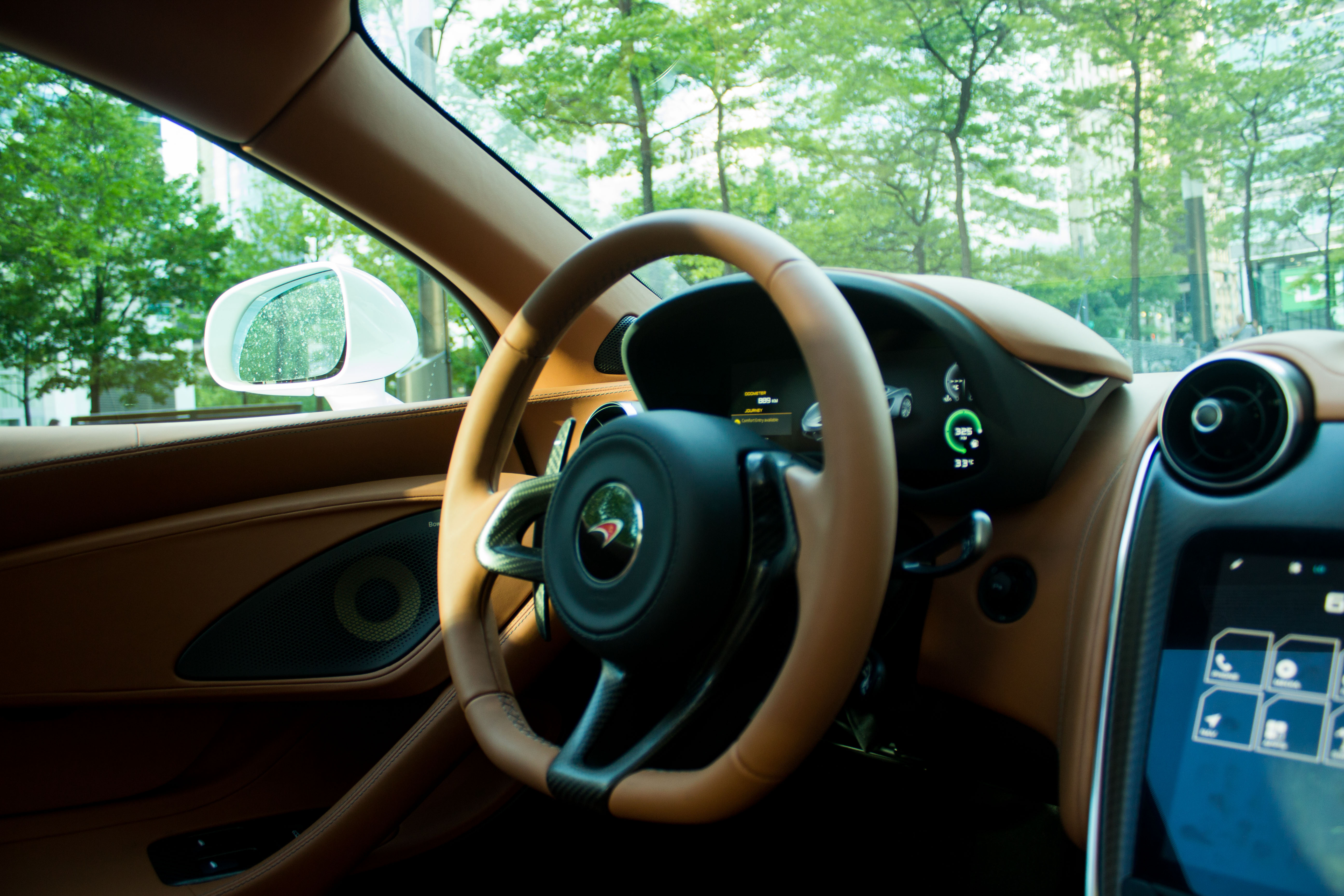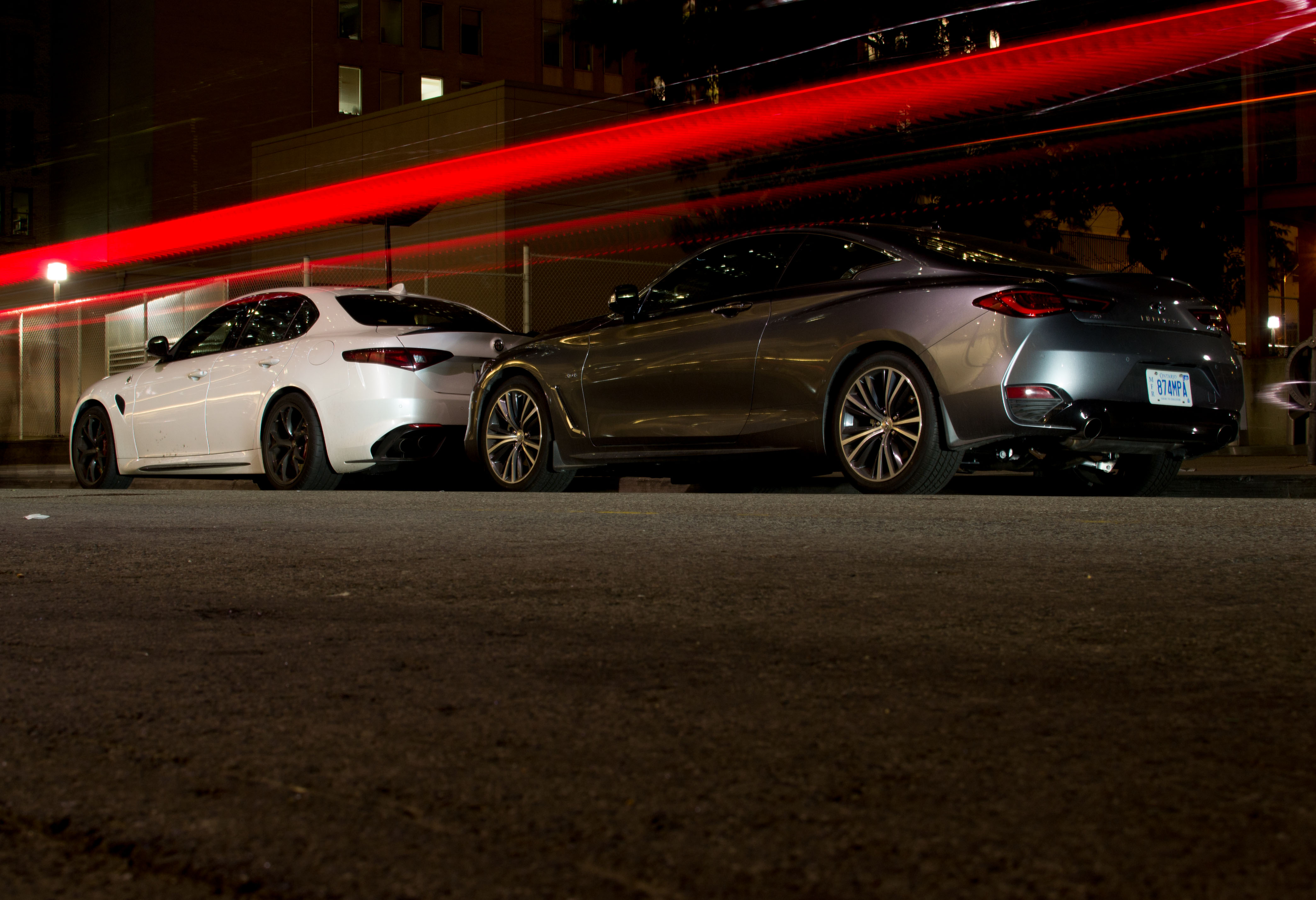With contributions by Sebastien Bell and Sam McEachern
Mechanics have made their last-minute checks, drivers circulate sur la piste managing tire and brake temperatures, engineers confirm strategies; cars stage on the starting grid, the dissonant cacophony of twenty 1.6-liter V6 hybrid Formula 1 engines spooling reverberates through the grandstands as five red lights illuminate sequentially…
Hosted on Montreal’s Île Notre-Dame since 1978, the Grand Prix Du Canada has always been a special place for the Formula 1 paddock. For decades, drivers have loved the city’s vibrating atmosphere and unbridled passion for the sport, but what they really love is the circuit’s proximity to a devilish downtown core drowning in alcohol and impeccably dressed women.
Why do you think we like it?
Like the man it’s named after, Le Circuit Gilles Villeneuve has always delivered thrills, spills and chills — Lewis Hamilton took his first ever F1 victory there in 2007, Michael Schumacher won seven times, then there was the two-hour rain delay in 2011, plus, it was the final place a V12-powered F1 car would ever win.
But this year’s race is more special than others. This year marks the 50th time Formula 1 has ventured down the St. Lawrence river, coinciding not only with Canada’s 150th anniversary but also Montreal’s ongoing 375th birthday celebrations, which have whipped the city into even more of a frenzy than is typical during Grand Prix weekend.
ALSO SEE: What’s F1 Ever Done For You? Lots, it Turns Out…
Sweetening the deal, Lance Stroll will race for the first time a la maison, 12 years after Canada’s only champion, Jacques Villeneuve, pulled the plug on his F1 career.
Few places embrace Formula 1 like Montreal does, checkered flags hang outside bars from the Old Port to the Plateau in a show of solidarity to speed freaks looking to drink their money, roads are shut down and houses are rented in what is definitely not an illegal manner. What better way to celebrate one of the most raucous races on the calendar than with a ridiculous road trip with very fast cars and very good friends.
For that, we would need fine machinery.
Infiniti lent us a twin-turbo Q60 and told us to come hang out in the Renault suite and chat with Infiniti’s boss of racing Tommaso Volpe and Renault Sport Racing’s Managing Director Cyril Abiteboul about Infiniti’s role in racing and the F1 team’s legitimate integration with Infiniti’s so-obviously-going-to-be-confirmed Q60 Black S project.
Then, McLaren Toronto lent us a shiny new Silica White 570GT and let us tag along on their inaugural Road to the Canadian Grand Prix Rally, inviting us to run around with an eclectic collection of owners, Pfaff staff, IMSA hot shoe and brand man Chris Green, and folks from Woking. The plan was to take the back way from Toronto to Ottawa before heading on to Montreal — with a fair bit of racing along the way — carving up the Canadian scenery with a medley of seven McLarens and one lonely, lovely Lamborghini.
But all of that was before Alfa Romeo told us we could and should run their brand-new Giulia Quadrifoglio from Toronto to Montreal and show it off during Grand Prix weekend when the city would be crawling with Alfisti.
Branded Content
The symbolism is sharp: Three cars from three brands of varying Formula 1 involvement, three different corporate cultures, three wildly distinct products, yet, their aim is the same — please your drivers.
McLaren is the winningest Formula 1 constructor in Canada, taking 13 race victories since the inaugural race at Mosport in 1967. Every McLaren road car built today features a carbon-fiber monocoque built with lessons learned and improved on since the company debuted the first ever carbon composite Formula 1 car in 1980. It manifests in the 570GT as an unfairly comfortable long-distance tourer that’s more than cable of holding its own on the track.
While Infiniti ditched its commercial partnership with Red Bull last year in favor of a technical one with corporate sister Renault Sport, embedding a crew of Japanese engineers in the team’s Viry-Châtillon engine factory in order to develop the team’s hybrid Electric Recovery System. Getting learning from the partnership onto the road is still tantalizingly unannounced, leaving our 3.0-liter V6 Q60 as an all-wheel-drive amuse bouche.
ALSO SEE: 6 Reasons You Should Definitely Watch Formula 1 This Year
Alfa Romeo’s sticker status on the side of the Ferrari SF70H brings back fond memories of the brand’s stereotypically comical stints in F1 during the ‘70s and ‘80s. FCA overlord Sergio Marchionne is adamant he wants Alfa Romeo back in the paddock as Scuderia Junior, provided it can sell enough cars, a contemporary take on Enzo’s original strategy to sell on Monday for money to win on Sunday.
As a result, the QV is a hot-blooded harbinger of Alfa’s sporting intentions and it’s covered in Ferrari’s fingerprints. From the exhausts bottom-end gurgle and buckshot spit on hard upshifts, steering that talks to your shoulders, and the wide-eyed excitement it evokes from onlookers; every shortcoming is easily excused when you remember this is the sedan Ferrari can’t build for themselves.
Empty Road, Full Tanks
Driving from Toronto to Montreal is really just a long bomb across Ontario’s MacDonald-Cartier Freeway, before you hook up with Quebec’s Autoroute 20 at the provincial border, but it’s an arrow straight four-lane affair with plenty of traffic cops and way too many transport trucks, a highly inappropriate venue for the many horsepowers we planned to smuggle into Canada’s Sin City.
The McLarens left Toronto shortly after the morning rush hour on a grizzly Tuesday morning, cutting our way up to Peterborough and on through the Kawarthas as our pack of Macs motored along towards Calabogie Peaks at a respectable clip. The 570GT is a pure grand tourer in every sense, it’s slightly softer coil-spring double-wishbone suspension making it a bit more comfort-oriented than the 570S, plus an elongated greenhouse and glass access hatch to help to maximize luggage space — but even with the additional room, make sure to travel very lightly, or alone.
McLaren’s separated three-mode powertrain and handling management system became a blessing as we moved across some of the region’s older and choppier B-roads in rainy conditions, switching the chassis and electronics into their most user-friendly settings, while keeping the powertrain in track mode for the most premium sound.
We caused a commotion everywhere we went, stunning people at the sight of several million dollars worth of machinery moving past. The cops only bugged us once, when someone in a Subaru called the police after our 4,000-horsepower-strong squad led by a former GT3 Cup champ passed in formation near Lakefield, but as a sportbike aficionado himself, Mister Officer understood the scrutiny a pack of fast cars comes under by the driving public.
Back in Toronto, motorcycle forums were being consulted in search of a hot scoop on worthwhile driving roads between Toronto and Montreal in order to let Julie and Suzie the Q stretch their legs a little. But before the holy knowledge of a roundabout southern route could be used, a visit to Mosport was needed in order to pay respects to the beginnings of our beloved Canadian GP before we could head out for the 50th.
Now known as Canadian Tire Motorsport Park, buildings may have sprouted and the landscaping may have changed, but otherwise, the track is largely unchanged from the one that hosted the first-ever Canadian Grand Prix during Canada’s 1967 Centenary.
After posing for pictures in Bowmanville, the Giulia and the Q60 hustled south to old Highway 2 through to Belleville before cutting south again to the 33, which runs into water at Glenora requiring a ferry ride to cross the aqueous gap. But the reward was worth the wait, as the roads were not only surreally scenic but, far more importantly, empty.
Even at speed, the Infiniti is lazy and pleasant like a Sunday, evidently the true touring car among the two. The wide sweeping corners suited the Q60’s wizardly Direct Adaptive Steering perfectly, which is designed to weight up through speedy bends in the road, yet lighten at slow speeds. Infiniti has done well to avoid a system being too heavy for the sake of being too heavy, but regardless of how smart the system is, Suzie the Q was the least able to communicate what the front wheels were doing beneath us.
The Q60 also gets Infiniti’s new Dynamic Digital Suspension, which uses a set of electronically adjustable dampers to manage roll, pitch and bounce rate. Even when tuned to Dynamic+, the coupe would never be described as overly stiff, upping the car’s sporting capabilities while still prioritizing driver comfort.
On the other hand, the Giulia’s truthfully direct and lightning quick steering rack show off why it’s the fastest four-door to ever lap Germany’s Nurburgring — a total athlete, taunting you to crank the thin-rimmed steering wheel harder, begging you to get on the gas sooner and light the rear tires up.
ALSO SEE: The Highlights And Lowlights Of The Alfa Romeo Giulia’s Launch
Julie also comes with her own active damping system, which adjusts how the aluminum front double wishbones and five-link rear end behave through the Chassis Domain Control knob located on the right side of the center console. In sportier modes, the rebound is ultra aggressive, at times the QV felt like it would literally leap off the road — we would have used a softer suspension setting, but Alfa only lets you dump the exhaust baffles in full race mode.
All-wheel drive and a much flatter torque curve help the Q60 pull extremely hard when you firewall the throttle, but even so, the Q60 is inherently not a sports car and Infiniti itself will even admit that the coupe is a car to be shared over long distances. The Alfa, on the other hand, is really made for doing dirty things alone, wanting to mercilessly snap necks and shatter ears.
Track Rats
Meanwhile, an hour outside of Montreal, in Mirabel, the McLarens pulled into the Circuit iCAR. We’ve behaved ourselves for more than 430 miles (700 km), and now it’s time to explore the Ricardo-built twin-turbo V8’s 8,500-rpm power band and see just how the 570GT compares to some of its siblings on the track.
McLaren assumes GT owners won’t track their car as much as S owners, so engineers dialed back both front and rear spring rates to maximize comfort, rejigged the performance algorithms, gave it a slightly lazier steering ratio, a quieter exhaust shared with the 540C (the ‘budget model only available in Canada), and special noise-dampening Pirelli tires.
ALSO SEE: 2017 Audi R8 V10 Plus vs McLaren 570S
The differences become evident on the track, where you can feel the GT’s heavier body and softer suspension roll the car’s weight onto the load bearing front tire – but not to the point where it’s too much of a disadvantage when screwing around with a 570S at 7/10ths. The cars are basically identical in terms of straight-line pace, anyways.
Power from the mid-mounted engine is routed through McLaren’s own seven-speed, dual-clutch, semi-automatic gearbox, which fires off shifts as fast as your fingers can flick the wheel-mounted carbon-fiber paddles.
Speaking of the transmission, flip it into full auto mode with the powertrain and chassis dialed to docile and you’d be hard pressed to even notice you’re driving a McLaren. The efficient nature of the powertrain meant even with spirited driving the 570GT was averaging 23.2 mpg (10.1 L/100 km) before track time spiked it to 17.4 mpg (13.5 L/100 km).
Cannonballing
After detouring hours out of the way with their ferry ride, Julie and Suzie the Q had finally cracked the Quebec border and were now barrelling towards Montreal.
These cars may share a segment, but they couldn’t be more different.
The Alfa’s 2.9-liter V6 is loud and peaky and abuses the rear
tires only, with a disgusting amount of power that comes on strong just before the 7,250 rpm redline and an intoxicating, syncopated idle thanks to an unbalanced crankshaft; while the Q60’s 300-hp 3.0-liter twin-turbo V6 offers peak power at a much lower 6,400 rpm, its 295 lb-ft delivered on a flatter torque curve from 1,600-5,200 rpm.
Unfortunately, the new engine has lost much of the VQ’s wonderful piercing exhaust pitch. Now muffled by the turbos, it still shows up when you’ve got the pedal matted, but almost in a distant way, contrasted with the Alfa that starts wailing at the slightest squeeze of the speed pedal before building to a full-blown supercar scream at the top of the tach.
The transmissions present another notable difference. Both are conventional automatics, the Giulia’s eight-speed providing lightning-quick upshifts and a significant amount of engine braking around town, while the Infiniti’s seven-speed box is effortlessly smooth and behaves more like it should. The Giulia has perfect aluminum paddle shifters, whereas our Q60 only featured a slapstick, which just isn’t as much fun when used enthusiastically.
City Slickers
Once we landed in Montreal, it was hard to tell which car captivated people more. The $273,000 McLaren was forever being filmed by women, men and children, but it didn’t elicit many conversations from the car spotters. On the flip side, seeing and hearing the $97,340 Alfa Romeo around downtown Montreal brought people genuine joy, with fans young and old approaching us to talk. We were hooligans treated as folk heroes. It’s totally an Alfa thing.
This made Julie the popular errand mule for our several days in the Plateau, the three of us piling into the Alfa to grab coffee in the morning, or head downtown in the afternoon, puttering around in first and second gear making the Ferrari-derived V6 sing, giggling like the little boys we are.
On the other hand, the $60,385 Q60 is a stealthily stylish car. Quietly powerful and silently stunning with its creased and cascading bodywork and angular lamp fixtures, the Infiniti may not have received the most compliments by volume, but it did receive the most precious one; as we rolled by a family, their young son cried out in excitement at seeing the Infiniti as his father quietly approved.
Same, Same, But Different
In the introduction to The Rebel, Albert Camus outlines the split between crimes of passion and crimes of logic as premeditation, that’s certainly the case with cars.
Giulia’s a cocaine-fueled crazy woman who edges you closer and closer to the brink, starting first with minor moving violations before evolving into full-blown felonies, leaving you with a demented grin of enjoyment plastered across your face.
When the back-end steps out, your hands are already hip to it and collect it with the gentlest flick of the wrists, but don’t be fooled, you don’t tame Giulia, you just learn how she likes it.
But the Giulia can be finicky. Entering details into the navigation, for example, can be a maddening 20-minute experience as you enter letters one by one with the rotary dial, only for the system to tell you the address you want doesn’t exist. Not to mention the one time it needed a power cycle after the electronic throttle control decided to quit while creeping along in morning traffic. Whatever, it’s a Ferrari-derived V6 that consistently averaged 21 mpg (11 L/100 km).
Did I mention it’s from Ferrari?
The Q60 is a crime of logic, loaded with technology and thinking bits, the pretty MD who mocks the sound and fury of her contemporaries before quietly and elegantly vanishing up the road with a recalibration of the adaptive cruise control. She was the most tech savvy with a suite of driver safety features and often served as the lead car because of the Alfa’s irreverent GPS. The double touchscreens did cause some apprehension at first, but its ergonomic value became evident when rejigging destinations, or desperately hunting for a gas station on the fly when Julie needed an extra fuel stop.
Suzie the Q is an extremely desirable car that can slip by unnoticed to those who aren’t sophisticated enough to notice her. Over the 1,000-km journey, she returned 28 mpg (8.4 L/100 km) and got as low as 30.9 mpg (7.6 L/100 km) — fast, frugal and fashionable.
The McLaren is seemingly both, a mix of Ferrari’s decadence and Infiniti’s geekiness. The 570GT is so good at being a car that it will get you arrested in less than six seconds, become bored with anything but the nastiest decreasing radius hairpin you can chuck it into, and will return better fuel mileage than our Audi SQ5 camera car.
As for the race, carnage at the start shook up the grid, which helped Hamilton notch his sixth win in Montreal. Lance Stroll also shut his critics up by earning his first points in Formula 1, while acting legend Sir Patrick Stewart drank champagne out of Danial Ricciardo’s shoe during the podium celebration.
On Île Notre-Dame, fans are allowed to walk the track immediately after the cars are put away, so we wandered over to the Wall of Champions to pour some warm beer out for all the races lost at the island’s infamous final corner, before walking further down the main straight to say Salut Gilles and thank the track for another stunning spectacle on Sunday.







